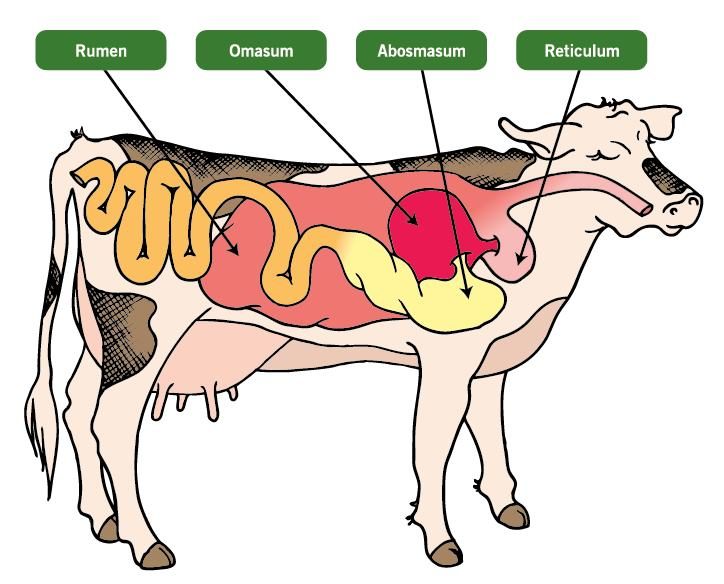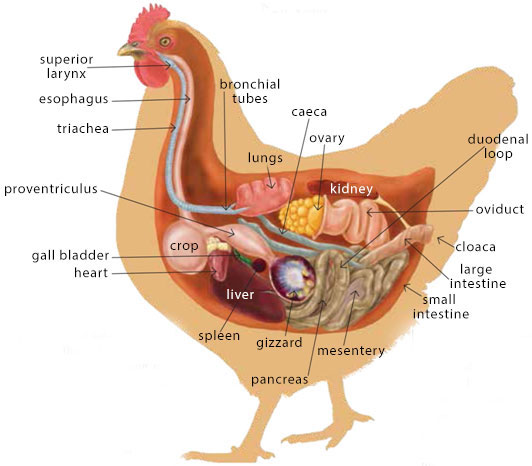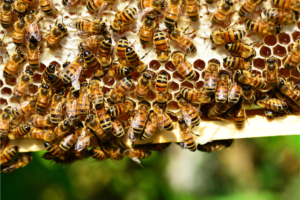Understanding the difference between ruminant and non-ruminant animals is crucial in the realm of zoology and animal science. These terms refer to two distinct groups of animals with diverse digestive systems. This article will take you through the difference between ruminant and no ruminant animals and the characteristics that set them apart.
Ruminant animals

Ruminant animals are a unique group of mammals distinguished by their complex digestive system, characterized by four distinct stomach compartments. This specialized digestive process allows them to efficiently extract nutrients from fibrous plant materials, making them well-suited for herbivorous diets.
The first compartment, the rumen, serves as a large fermentation chamber where microbial activity breaks down ingested food. Subsequently, partially digested material called cud is regurgitated and re-chewed for further breakdown.
The second compartment, the reticulum, functions in the initial breakdown of coarse particles and aids in the regurgitation process.
The omasum, the third compartment, acts as a filtration system, extracting water and additional nutrients from the cud before it enters the final stomach compartment.
The fourth compartment, the abomasum, is comparable to a true stomach, where enzymatic digestion occurs, breaking down nutrients for absorption into the bloodstream.
Examples of ruminant animals include; Cows, Sheep, Deer, Goats, Giraffes, Antelopes, Buffaloes, Moose, Elk, Camels, Yaks, Llamas, Alpacas, Bison, Musk oxen, Chamois, Ibex, Pronghorns, Kangaroos, Hippopotamuses (foregut fermenters)
Characteristics of ruminant animals
- Multiple Stomach Compartments: Ruminants have a four-chambered stomach, enabling efficient digestion.
- Regurgitation and Re-chewing: They regurgitate their food to re-chew, aiding in better breakdown.
- Microbial Fermentation: Ruminants rely on microbial fermentation to break down complex plant materials.
- Herbivorous Diet: These animals predominantly feed on plant materials, such as grass and leaves.
- Cud-Chewing Habit: Ruminants exhibit a distinctive cud-chewing behavior for optimal digestion.
- Complex Digestive Tract: Their digestive tract is adapted to extract nutrients from fibrous plant material.
- Specialized Saliva: Ruminants produce saliva rich in enzymes to aid in the digestion process.
- Slow Digestion: The digestion process in ruminants is comparatively slow, facilitating nutrient absorption.
- Methane Production: Ruminants are known for producing methane during digestion.
- High Nutrient Absorption: Their intricate digestive system allows for efficient nutrient absorption.
Read also: Difference between goats and sheep
Non ruminant animals

Non-ruminant animals, in contrast to their ruminant counterparts, possess a simpler digestive system with a single-chambered stomach, allowing for a more direct and expedited digestive process.
This streamlined digestive tract is particularly adapted to a wide range of diets, including both plant and animal materials, making non-ruminants versatile in their feeding habits.
Unlike ruminants, non-ruminant animals do not engage in the regurgitation and re-chewing of their food, as their digestive process is more linear and rapid.
Examples of non ruminant animals include; Dogs, Cats, Humans, Pigs, Horses, Rats, Elephants, Rabbits, Guinea Pigs, Monkeys, Dolphins, Whales, Seals, Sea Lions, Bears
Characteristics of non ruminant animals
- Single Stomach Compartment: Non-ruminants have a single-chambered stomach for digestion.
- Faster Digestion: Their digestive process is generally quicker compared to ruminants.
- Carnivorous or Omnivorous Diet: Non-ruminants may have a diet consisting of both plant and animal materials.
- No Regurgitation: Unlike ruminants, non-ruminants do not regurgitate and re-chew their food.
- Simple Digestive Tract: Their digestive tract is less complex, adapted to a variety of dietary sources.
- Limited Microbial Fermentation: Non-ruminants rely less on microbial fermentation in digestion.
- Varied Saliva Composition: Saliva composition may vary, but it lacks the specialized enzymes found in ruminants.
- Adaptability to Different Diets: Non-ruminants can adapt to a wider range of diets.
- Less Methane Production: Methane production is typically lower in non-ruminants.
- Efficient Energy Extraction: Non-ruminants efficiently extract energy from various food sources.
Difference between ruminant and non ruminant animals
| Feature | Ruminant Animals | Non-Ruminant Animals |
|---|---|---|
| Stomach Structure | Four-chambered stomach | Single-chambered stomach |
| Diet | Predominantly herbivorous | Can be carnivorous or omnivorous |
| Digestion Speed | Slow digestion | Faster digestion |
| Regurgitation | Present, with re-chewing of cud | Absent |
| Digestive Tract Complexity | Complex | Less complex |
| Microbial Fermentation | Relies heavily on microbial fermentation | Limited microbial fermentation |
| Cud-Chewing Habit | Exhibits cud-chewing behavior | Absence of cud-chewing behavior |
| Saliva Composition | Enzyme-rich saliva | Varied saliva composition |
| Methane Production | Produces methane during digestion | Lower methane production |
| Energy Extraction | Optimized for plant material | Efficient extraction from varied sources |
| Adaptability to Diets | Specific to herbivorous diets | Adaptable to a wider range of diets |
| Digestive Enzymes | Specialized enzymes for plant digestion | Generalized enzymes for various foods |
| Nutrient Absorption | High nutrient absorption efficiency | Efficient but may vary |
| Gastric Motility | Slower gastric motility | Faster gastric motility |
| Excretion | Solid feces with partially digested plant matter | More homogeneous, often liquid form |
Read also: Difference between Alpaca & Llama
The Bottom line
In conclusion, the difference between ruminant and non-ruminant animals goes beyond their dietary preferences. It involves intricate physiological adaptations that enable these creatures to thrive in diverse ecosystems. Recognizing these differences enhances our understanding of the animal kingdom and their role in the broader ecological context.
